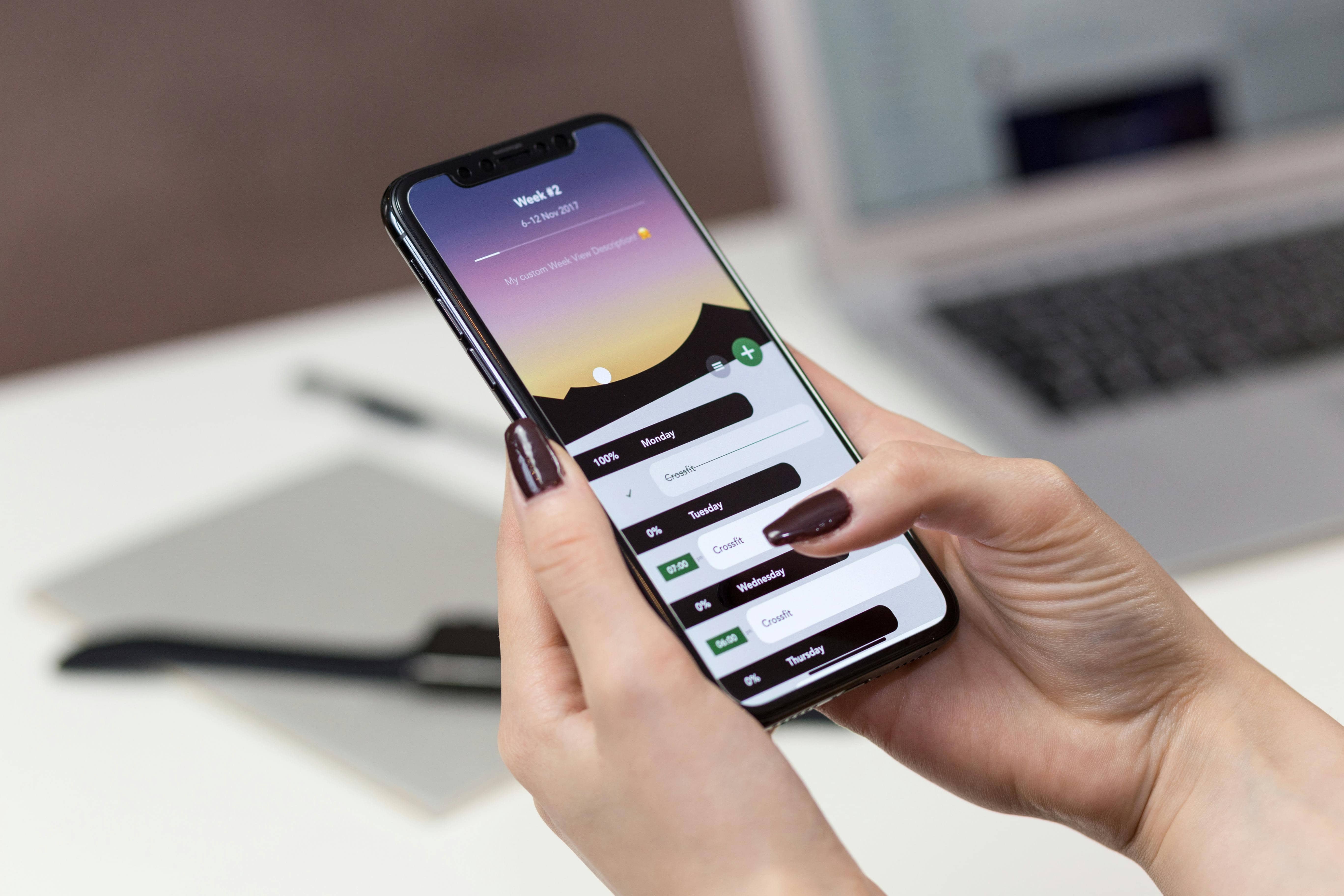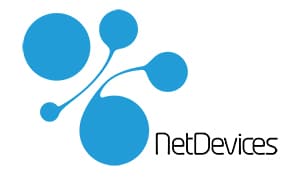
In a technologically advanced world, 2024 promises to be a revolutionary year for SaaS (Software as a Service) applications, particularly with the emergence of no-code development. This evolution now makes it possible to create applications without writing code, simplifying the process and opening up infinite possibilities for businesses and individuals alike.
What is application SaaS?
SaaS short for Software as a Service , is a delivery model for software. that has transformed the way businesses access and use applications.
Unlike traditional software/applications, which require installation and maintenance on individual computers or servers, SaaS applications are hosted in the cloud and accessed via a web browser.
This means that users can access the software from anywhere with an Internet connection, eliminating the need for complex installations and updates.
SaaS applications cover a wide range of functions, from customer relationship management (CRM) and project management to communication tools and collaboration platforms.
They're renowned for their scalability, flexibility and cost-effectiveness, making them the preferred choice for businesses of all sizes looking to streamline their operations and stay ahead in today's fast-moving digital world.
Having gained an understanding of SaaS applications, let's now explore the central role of codeless application development in facilitating their widespread adoption.
What is application SaaS no-code?
In the early stages of development no code The main focus was on creating simple applications.
However, as codeless development continues to advance, it opens up new possibilities for turning complex SaaS applications into reality.
A application SaaS without code is a application SaaS (Software as a Service) created and deployed using no code development platforms.
The no-code approach enables individuals and organizations to design, develop and deploy SaaS applications by taking advantage of intuitive visual interfaces and preconfigured building blocks without the need for traditional coding.
This has eliminated the technical barriers that traditionally prevented non-developers from participating in the creation of complex software.
The democratization of software development via no-code platforms not only accelerates the SaaS application development process, but also cultivates an environment conducive to creativity and innovation.
It enables entrepreneurs, startups and established companies to bring their SaaS applications to life quickly and efficiently, transforming our approach to building SaaS businesses.
Popular SaaS categories, estimated market size and 2024 projections
It's important to note that some SaaS application categories are more competitive than others. These include The CRM market is highly competitive, with a number of established players.
However, there are still opportunities to create innovative new CRM applications capable of competing with the established players.
If you're thinking of creating a application SaaS no code, we often encourage you to do your research and choose a category that matches your skills and experience.
You also need to take a close look at the competition on the market and identify a way to differentiate your application from existing solutions.
What are the differences between SaaS, PaaS and IaaS?
SaaS, PaaS and IaaS are three different cloud computing service models.
Each model offers you, the customer, a different level of control and responsibility.
SaaS model: Software as a Service
SaaS applications are hosted in the cloud and accessed by users via the Internet.
SaaS providers manage all aspects ofapplication, including hardware, software and infrastructure.
Customers simply have to pay a subscription fee to useapplication (whereas some are free).
Here are a few examples of SaaS applications:
- The Google workspace
- Microsoft 365
- Zoom
PaaS model: Platform as a Service
PaaS platforms provide developers with the tools and resources they need to build and deploy web applications.
PaaS providers manage hardware, software and infrastructure, so that codeless developers can concentrate on writing code or creating front-end systems via visual drag-and-drop editors and database structuring, respectively.
Here are a few examples of applications PaaS :
- AWS Elastic Beanstalk
- Google App Engine
- application Azure service
- Heroku
IaaS model: Infrastructure as a Service
IaaS platforms enable customers to access IT resources such as virtual machines, storage and networking.
Customers can use IaaS resources to create and deploy any type ofapplication.
Customers are responsible for managing all aspects of their infrastructure, including the operating system, middleware and applications.
Here are a few examples of IaaS applications:
- AWS EC2
- Google calculation engine
- Azure virtual machines
- Digital Ocean
- Linode
Impact of no-code on the SaaS industry in 2024
The SaaS industry is growing fast and is expected to reach 357.7 billion in revenues by 2027 .
This growth is driven by several factors, including the growing adoption of cloud computing the growing popularity of remote working the ease of creating more applications via no-code platforms and growing demand for specialized software applications.
Here are a few more things you need to know about the SaaS business model:
1. According to a January 2023 report by Grand View Research, the SaaS market is expected to grow by 18.7% in 2024 to reach global market size of $273.55 billion.
2. The SaaS industry should create 2.3 million new jobs by 2024
3. The Asia-Pacific region should be the world's fastest-growing SaaS market with an expected annual growth rate of 25% from 2022 to 2024.
4. The rise of artificial intelligence (IA) and machine learning (ML) leads to the development of new SaaS applications and the enhancement of existing ones.
5. According to a Gartner report, by 2025, 80% of new SaaS applications will incorporate AI or ML.
6. A Deloitte survey showed that 63% of SaaS companies are already using AI or ML in one form or another, and a McKinsey study found that AI and ML could boost global SaaS revenues 1,400 billion by 2030.
7. The fastest-growing SaaS segments in 2024 should be customer relationship management (CRM) corporate resource planning (ERP) and human capital management (HCM).
Which no-code application designers are ideal for creating SaaS products?
1. Bubble.io :
Bubble is a code-free platform that lets you create web and mobile applications without writing code.
It offers a drag-and-drop interface and a variety of predefined components, making it easy to create customized SaaS applications.
Several convincing factors contribute to making Bubble.io the preferred and optimal choice for creating SaaS applications at NetDevicesincluding :
1. Scalability :
Bubble.io is scalable, which means it can handle a large number of users and transactions.
This makes it a good option for SaaS applications, which are expected to grow rapidly.
2. Flexible pricing :
Bubble.io offers a wide range of flexibility for application development, with several pricing levels adapted to the creation of a wide range of applications, including SaaS solutions.
Pricing options start at 0 to explore Bubble and include valuable features such as API connectors, a component library, a uniqueapplication editor, up to 50,000 workload units per month and access to six hours of server logs.
3. User roles and authorizations :
Bubble.io allows you to create extended user roles and permissions, so you can control who has access to different parts of your application SaaS.
4. Subscription management :
Bubble.io offers integrated subscription management features, so you can easily bill your customers for access to your application SaaS solution.
5. API integration :
Bubble.io allows you to integrate your application SaaS with other APIs.
This means you can connect your application SaaS to other popular SaaS applications, such as Salesforce, HubSpot and Google Workspace, as well as to AI and ML plug-ins.
2. Web feeds :
Webflow is a no-code platform that lets you create and design responsive websites without writing code.
It offers a drag-and-drop interface and a variety of predefined components, making it easy to create customized SaaS websites.
Here are some of the unique advantages that make Webflow suitable the creation of SaaS applications:
1. Flexibility:
Webflow offers great flexibility when it comes to creating SaaS applications.
You can use Webflow to create a wide variety of SaaS applications, from simple landing pages to complex e-commerce platforms.
2. Scalability :
Webflow is scalable, which means it can handle a large number of users and transactions.
This makes it a good option for SaaS applications, which are expected to grow rapidly.
3. Design freedom :
Webflow gives you total control over the design of your application SaaS.
You can use Webflow to create a customized design tailored to your specific needs and brand image.
Zapier:
Zapier is a no-code automation platform that can be used to connect different SaaS applications.
This can be used to automate tasks and workflows, and to create customized SaaS applications that integrate with other popular SaaS applications.
Aerial table :
Airtable is a hybrid spreadsheet-database platform that can be used to create a variety of SaaS applications, including CRM, project management and support software.
Slide :
Glide is a no-code platform that lets you create mobile applications without writing code.
It offers a drag-and-drop interface and a variety of predefined components, making it easy to create customized SaaS mobile applications.
Step-by-step approach to creating your application SaaS without code by NetDevices
Once you have chosen your preferred no-code platform ( we recommend using Bubble.io) To create a successful application SaaS, you must religiously follow the steps below:
Step 1: Define your product idea.
In this step, you should aim to answer questions such as:
- What type ofapplication SaaS do I need to create?
- What problem does my application SaaS solve?
- Who are my target customers?
Once you have a clear understanding of your product idea, you can start drawing up a plan for its construction.
Step 2: Design your application SaaS.
This is where you start working on the user interface and user experience (UX/UI) of your application.
- What features will your application SaaS offer?
- How will users navigate your application website?
For this stage, NetDevices calls on dedicated designers UX/UI highly qualified to design functional applications for users in a variety of sectors.
However, you can also use the visual editor in Bubble.io to design your application no-code.
Step 3: Create your application.
Once you've designed your application, you can start creating it using the drag-and-drop interface in Bubble.io.
Bubble.io offers a variety of predefined components and templates that you can use to create your application Saas quickly and easily.
Step 4: Test your application.
Once you've created your application, it's important to test it thoroughly to make sure it works as intended. In addition, you can test your application by creating user accounts and interacting withapplication as if you were a real user.
Step 5: Launch your application.
Once you are satisfied with your application, you can launch it to the public.
Bubble.io makes it easy to deploy application in a production environment.
Need a path to profit? Here are some basic SaaS pricing models you can use
1. Flat-rate pricing model :
Flat-rate pricing is the simplest SaaS pricing model.
You charge customers a fixed monthly or annual fee for access to your application SaaS solution.
This pricing model is easy to understand and manage, but can be difficult to scale if you have a variety of features or usage levels.
Canva is a graphic design SaaS offering a flat-rate pricing model for its Pro version.
Subscribers pay a fixed monthly or annual fee for access to premium features, templates and design tools.
Flat-rate pricing is the third most popular SaaS pricing model, with 21% of SaaS companies using it.
2. Tiered pricing :
Tiered pricing means offering different pricing levels with different features and benefits.
This pricing model allows you to offer a variety of price levels to attract different customers.
It also enables you to sell incentive and cross-selling products to higher-level customers.
One example is Stripe, a popular application SaaS solution that enables businesses to accept online payments.
Stripe offers a variety of pricing levels, with different features and benefits. Pricing levels start at 2.9% + 30¢ per transaction.
Tiered pricing is the second most popular SaaS pricing model, with 28% of SaaS companies using it.
3. Usage-based pricing :
Usage-based pricing charges customers according to how much they use your application SaaS solution.
This pricing model is suitable for companies whose products are used at different levels, such as a cloud storage service or an e-mail marketing platform.
Twilio a platform that provides cloud communications APIs for voice, video and messaging, is a classic example of a usage-based pricing model.
Customers are often billed according to the number of messages, minutes or data they use on the platform.
4. Pricing per user :
Per-user pricing invoices customers according to the number of users who have access to your application SaaS solution.
This pricing model is suitable for companies whose products are used by teams or organizations.
For example, Slack application , a widely used code-free designed for team communication, offers both free and paid subscription options, with four distinct paid packages, each tailored to suit different needs and preferences.
The Pro" package costs 7.25 per user per month the Business+" package costs 12.50 per user per month and for large companies, there is the Enterprise Grid" plan Pricing details can be obtained by contacting Slack directly.
5. Freemium pricing :
Freemium pricing offers a basic version of your application SaaS application free of charge, with pay-as-you-go packages for premium features or higher usage levels.
This pricing model is effective for attracting new customers and generating leads. It can also be used to sell paid packages to customers.
One example is Trello a popular no-code application for project management. Trello offers a free package with limited functionality, such as task boards, lists and due dates, and paid packages starting at $10 per user per month.
Its paid packages offer more features, such as custom fields, advanced reports and integrations with other applications.
In addition to these basic pricing models, there are a number of other SaaS pricing models you can use, such as :
6. Hybrid pricing :
Hybrid pricing combines two or more different pricing models.
For example, you could offer a tiered pricing model with usage-based pricing for certain features.
7. Volume pricing :
Volume pricing offers discounts to customers who purchase a certain number of users or seats.
This pricing model is ideal for companies looking to attract large customers.
8. Subscription rates :
Subscription rates charge customers a recurring fee for access to your application SaaS.
This pricing model is suitable for companies whose products are used on a regular basis.
Why you should create your application SaaS with an agency like NetDevices
To speed up the introduction of your no-code SaaS products to market, NetDevices follows a standard project practice that encompasses :
1. Agile methodologies :
At NetDevices We recognize the importance of starting your SaaS no-code development journey with a simplified MVP (minimum viable product).
Rather than trying to create all the features of theapplication of your dreams at once, we take a step-by-step approach.
The average SaaS MVP has 3 features, and the most successful SaaS MVPs have between 1 and 5 features, according to a survey of over 1,000 SaaS companies by product plan.
Initially, we'll create a simplified version of your application, focusing only on its core functionality. In fact, once your MVP has been launched, you can gradually integrate new features and enhancements based on valuable feedback from your users.
2. Expansion and scalability :
We design yourapplication Saas no-code architecture with scalability in mind, ensuring that it can grow seamlessly as your user base expands.
This scalability minimizes downtime and enables your application to adapt effortlessly to increased use.
According to a CB Insights report, the average SaaS MVP is launched with 100 users, and the most successful SaaS MVPs are launched with between 50 and 200 users.
3. Prioritized feedback mechanism :
At NetDevices Our priority is to gather feedback from potential and first-time users.
What's more, once we've created a prototype of your application SaaS no-code, we work together to gather user feedback.
This feedback process plays a key role in improving your application before and after its public launch.
5. Comprehensive tests :
We carry out rigorous testing, including usability, performance and security tests, to ensure that your application Saas no-code is robust, secure and user-friendly from day one.
Conclusion
In conclusion, as we approach 2024, SaaS application creation is at the dawn of an era of transformation, where innovation thrives without the need for complex coding.
No-code SaaS development appears to be a powerful catalyst for this change, offering a gateway to integrating AI and ML SaaS, enabling individuals and organizations to create, deploy and evolve their SaaS applications with unprecedented ease.
While we've delved into the fundamentals of SaaS applications, the importance of no-code SaaS development and the various no-code application builders at your disposal, it's clear that the possibilities in 2024 are vast and exciting.
The SaaS landscape is dynamic, with a variety of pricing models and numerous opportunities for differentiation. Therefore, it's imperative to align your SaaS business with your unique skills, aspirations and market conditions.
In 2024, horizons are limitless, and your journey as the owner of a no-code SaaS startup or a company dedicated to creating SaaS tools for greater customer convenience awaits you, with many opportunities for innovation and success.


